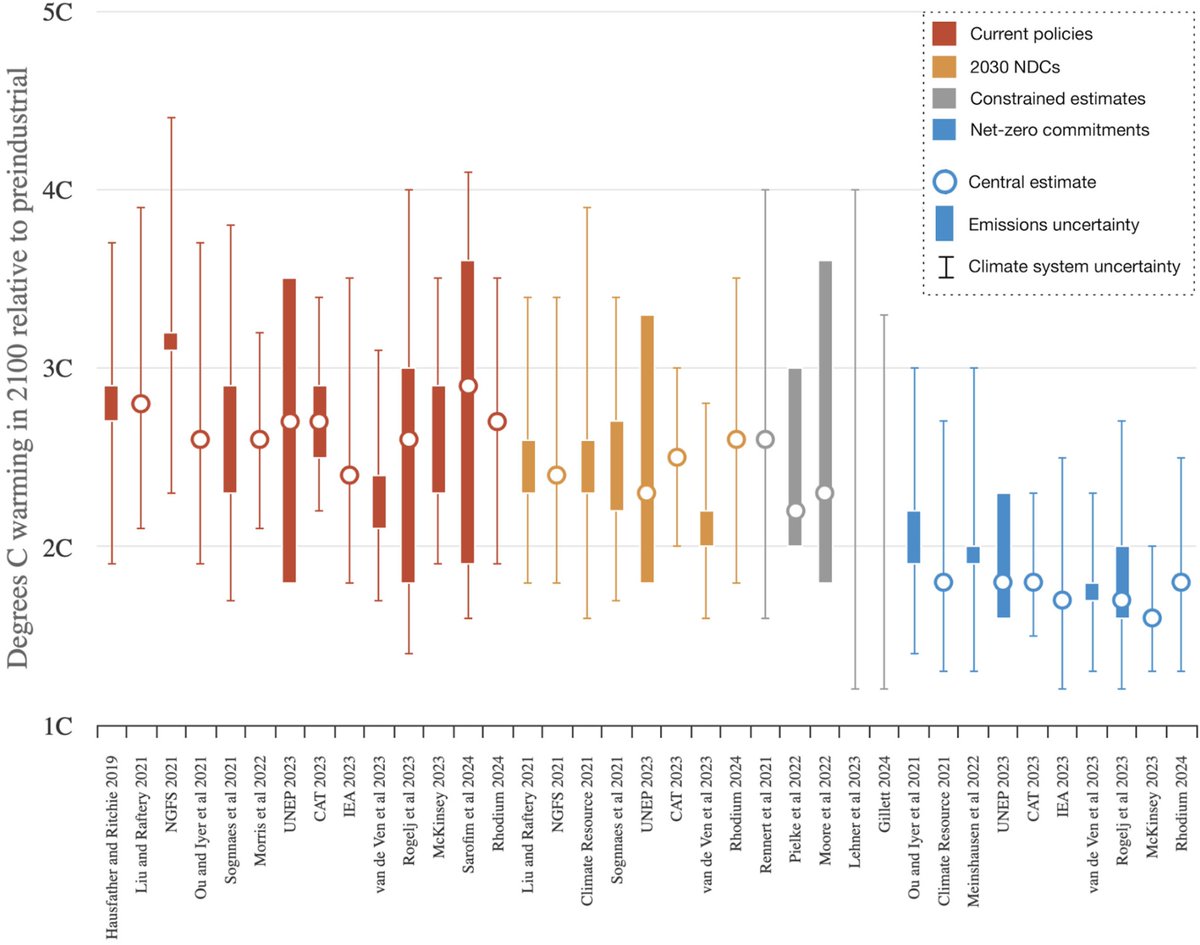In the 2000s global CO2 emissions grew at 3% per year. Over the past decade, however, this slowed to only 1% per year.
In a new analysis we find that falling energy intensity of GDP and emissions intensity of energy were main drivers of this decline: thebreakthrough.org/issues/energy/…
1/
In a new analysis we find that falling energy intensity of GDP and emissions intensity of energy were main drivers of this decline: thebreakthrough.org/issues/energy/…
1/

A useful (though imperfect) tool to decompose drivers of emissions is the Kaya identity; it represents emissions as a combination of population, economic growth per person, energy intensity of the economy, and carbon intensity of energy: en.wikipedia.org/wiki/Kaya_iden… 2/ 

We can use this identity to decompose the drivers of emissions growth during each year. It turns out, conveniently, the the growth rate of emissions is the sum of the growth rates of each of the underlying factors. Here are drivers of global emissions since 2000: 3/ 

If we compare the 2001-2010 period and the more recent 2011-2019 period (excluding 2020 as its quite anomalous and all needed data is not yet available), we see that while population growth and GDP growth remain relatively constant, lower energy/gdp and CO2/energy drive declines: 

Each of these factors – lower energy intensity of GDP, and lower carbon intensity of energy – are responsible for around half of the decline in CO2 growth rate from 3% to 1% between the two periods. 5/
However, looking at global average values obscures a lot of variability and can give a misleading impression of the underlying drivers. For example, a global Kaya analysis assumes that population growth increases global average emissions proportionately. 6/
In reality, population growth today is happening primarily in the countries with the lowest per-capita emissions. Rich countries with the highest per-capita emissions tend to have the lowest rate of population growth. 7/
To provide a more detailed picture, we divide the world up into major countries/regions based on the largest emitters – China, the US, the EU, India, Russia, Japan, and the rest of the world. 8/ 

Here are the drivers of emissions growth over the two periods (2001-2010 and 2011-2019) across the different regions and for the world as a whole: 9/ 

And here are the drivers of changes in emissions growth between the two periods (e.g. what changed!): 10/ 

The world as a whole has slowed the growth of emissions over the past decade driven by declines in both the energy intensity of GDP - as economic growth is increasingly driven by the service sector and information technology rather than traditional manufacturing... 16/
and falling CO2 intensity of energy due to the replacement of coal by natural gas and renewable energy. However, this global picture obscures the role of very different factors across different regions, including slower economic growth in China and Russia. 17/
Some of these factors - such as falling population, declining energy use per GDP, and emissions per energy use - are likely to accelerate due in the future as clean energy technologies become more cost-effective and countries become wealthier. 18/
Economic growth is more of a wildcard, but even here there are likely diminishing returns to growth as countries become wealthier. The confluence of these factors suggests that global emissions will likely plateau or even slightly decline in the coming decade. 19/
At the same time, current trends continuing will fall far short of the rapid emissions reductions needed for the world to meet Paris Agreement goals. 20/
For more details and discussion of drivers within different countries/regions, read the full article here: thebreakthrough.org/issues/energy/… 21/
• • •
Missing some Tweet in this thread? You can try to
force a refresh

























